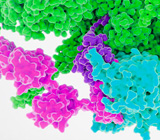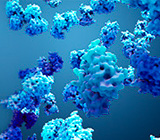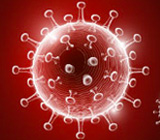-
REAGENT SERVICES
Hot!
-
Most Popular Services
-
Molecular Biology
-
Recombinant Antibody/Protein
-
Reagent Antibody
-
CRISPR Gene Editing
-
DNA Mutant Library
-
IVT RNA and LNP Formulations
-
Oligo Synthesis
-
Peptides
-
Cell Engineering
-
- CRISPR/Cas9 sgRNA
- CRISPR/Cas12a crRNA
- Prime Editing Guide RNA
- Base Editing Guide RNA
- HDR Templates
- gRNA + HDR Template Design Tools
- cGMP Guide RNA
- cGMP HDR Templates
- CRISPR/Cas Proteins
- CAR-T Knock-in Optimization Kit
- CRISPR Plasmids
- CRISPR gRNA Plasmid Libraries
- CRISPR Cell Lines
- Microbial Genome Editing
-
-
PRODUCTS
-
Most Popular Reagents
-
 Instruments
Instruments
-
Antibodies
-
ELISA Kits
-
Protein Electrophoresis and Blotting
-
Protein and Antibody Purification
-
Recombinant Proteins
-
Molecular Biology
-
Stable Cell Lines
-
Cell Isolation and Activation
-
 IVD Raw Materials
IVD Raw Materials
-
 Therapy Applications
Therapy Applications
-
Resources
-
- Pharmacokinetics and Immunogenecity ELISA Kits
- Viral Titration QC ELISA Kits
- -- Lentivirus Titer p24 ELISA KitHot!
- -- MuLV Titer p30 ELISA KitNew!
- -- AAV2 and AAVX Titer Capsid ELISA Kits
- Impurity Test ELISA Kits
- -- BSA ELISA Kit, 2G
- -- Cas9 ELISA KitNew!
- -- Protein A ELISA KitNew!
- -- His tagged protein detection & purification
- -- dsRNA ELISA Kit
- -- Endonuclease ELISA Kit
- COVID-19 Detection cPass™ Technology Kits
-
- Automated Maxi-Plasmid PurificationHot!
- Automated Mini-Plasmid PurificationNew!
- PCR Reagents
- S.marcescens Nuclease Benz-Neburase™
- DNA Assembly GenBuilder™
- Cas9 / Cas12a / Cas13a Nucleases
- Base and Prime Editing Nucleases
- GMP Cas9 Nucleases
- CRISPR sgRNA Synthesis
- HDR Knock-in Template
- CRISPR Gene Editing Kits and Antibodies
-
![AmMag™ Quatro Automated Plasmid Purification]() AmMag™ Quatro automated plasmid purification
AmMag™ Quatro automated plasmid purification
-
![Anti-Camelid VHH]() MonoRab™ Anti-VHH Antibodies
MonoRab™ Anti-VHH Antibodies
-
![ELISA Kits]() ELISA Kits
ELISA Kits
-
![Precast Gels]() SurePAGE™ Precast Gels
SurePAGE™ Precast Gels
-
![Quatro ProAb Automated Protein and Antibody Purification System]() AmMag™ Quatro ProAb Automated Protein and Antibody Purification System
AmMag™ Quatro ProAb Automated Protein and Antibody Purification System
-
![Target Proteins]() Target Proteins
Target Proteins
-
![AmMag™ Quatro Automated Plasmid Purification]() AmMag™ Quatro automated plasmid purification
AmMag™ Quatro automated plasmid purification
-
![Stable Cell Lines]() Stable Cell Lines
Stable Cell Lines
-
![Cell Isolation and Activation]() Cell Isolation and Activation
Cell Isolation and Activation
-
 IVD Raw Materials
IVD Raw Materials
-
![Quick
Order]() Quick Order
Quick Order
-
![Quick
Order]() Quick Order
Quick Order
- APPLICATIONS
- RESOURCES
- ABOUT US
- SIGN IN My Account SIGN OUT
- REGISTER

![Amino Acid Code Amino Acid Code]()
Biology Terms Dictionary
This Biology terms dictionary provides query services for biology and biochemistry terms. Please enter the biology or biochemistry terms you want to search.
List by Alphabet: A B C D E F G H I J K L M N O P Q R S T U V W X Y Z
Protein Characterization
Definition
Protein characterization refers to the comprehensive analysis and identification of the physical, chemical, and functional properties of a protein. This process is essential for understanding the protein’s structure, function, interactions, and role within biological systems. Protein characterization is a critical step in many areas of biotechnology and life sciences, such as drug development, recombinant protein production, and functional genomics.
Key Aspects
-
Structural Characterization:
Involves determining the three-dimensional structure of a protein, including:
- Primary structure (amino acid sequence).
- Secondary structure (alpha-helices and beta-sheets).
- Tertiary structure (overall 3D folding).
- Quaternary structures (protein subunit arrangement).
Techniques such as X-ray crystallography, NMR spectroscopy, and cryo-electron microscopy are often used for this purpose.
-
Physicochemical Properties:
Includes analyzing molecular weight, isoelectric point (pI), charge, solubility, hydrophobicity, and stability. Methods such as:
- SDS-PAGE.
- Mass spectrometry (MS).
- Isoelectric focusing (IEF).
are commonly employed to assess these properties.
-
Functional Characterization:
Evaluates the biological activity and function of a protein, including:
- Binding affinities.
- Enzymatic activity.
- Interactions with other molecules (e.g., ligands, substrates, or other proteins).
Techniques such as enzyme assays, surface plasmon resonance (SPR), and bio-layer interferometry (BLI) are used for functional studies.
-
Post-Translational Modifications (PTMs):
Proteins often undergo PTMs such as:
- Phosphorylation.
- Glycosylation.
- Acetylation.
These can affect their function and stability. Characterizing these modifications is crucial for understanding protein regulation and behavior. Techniques such as mass spectrometry (MS) and Western blotting are frequently used to identify PTMs.
Applications
-
Drug Development:
Characterizing therapeutic proteins like monoclonal antibodies or enzymes to ensure efficacy, safety, and purity.
-
Recombinant Protein Production:
Ensuring the correct expression, folding, and activity of proteins produced in expression systems such as bacteria, yeast, or mammalian cells.
-
Biotechnology and Research:
Studying protein interactions, pathways, and molecular mechanisms in various biological processes.
Techniques for Protein Characterization
- Mass Spectrometry (MS): Used to determine the molecular weight of proteins, confirm amino acid sequences, identify PTMs, and analyze the composition of protein complexes.
- SDS-PAGE: Used for analyzing protein molecular weight and post-translational modifications.
- Western Blotting: Use of antibodies for specific protein expression assays as well as protein molecular weight and PTMs analysis.
- X-ray Crystallography / NMR / Cryo-EM: For determining detailed structural information.
- Chromatography (e.g., HPLC, SEC): Used for purity analysis and separation of protein mixtures.
Importance
Protein characterization is essential for ensuring that proteins used in pharmaceuticals, research, and industrial applications meet specific quality and functional standards. It helps in validating the protein's physicochemical properties, biological activity, stability, and purity, which are critical for reproducibility and safety in applications like drug design and diagnostics.
In summary, protein characterization provides a thorough understanding of a protein’s structure and function, enabling advances in biotechnology, medicine, and basic research.
- Tags:
- Protein
Related Biology Tools
-
GenSmart™ Codon Optimization
GenSmart Optimization is a free online tool for performing codon optimization to improve gene expression. GenScript's patented algorithms are integrated into the tool to optimize the computing capability of high-performance sequence generation.
-
DNA Construct Design Tool
GenSmart™ Design is a free online DNA construct design tool developed by GenScript. GenSmart™ Design has two design modules, the Create Construct module for individual plasmid design and the Create Library module for DNA library design.
-
Codon Frequency Tables
This online tool shows commonly used genetic codon frequency table in expression host organisms including Escherichia coli and other common host organisms.
Service and Products

Protein Expression
GenScript recombinant protein and rAb services provide high quality recombinant proteins and rAbs for a variety of downstream research applications.

Bacterial Expression
One-stop service from Sequence to Protein starting from $1600, 4 weeks.

Insect Expression
GenScript's BacuVance baculovirus expression system was developed by our in-house team of scientists for virus production and expression of recombinant proteins from baculovirus-infected insect cells.

Mammalian Transient Expression
Proprietary High Density (HD) expression system, enhance the protein yield up to 100 fold, achieve antibody titers up to 3 g/L.

Reagents for COVID-19 Research
Gram level, ready to ship RBD proteins, ACE2 assay cell lines and pseudovirus.
-
Top Search
-
Hot Glossary
-
Antibody
If you know of any terms that have been omitted from this glossary that you feel would be useful to include, please send detail to the Editorial Office at GenScript: website@genscript.com
If your term is adopted, we will send 1,000 EzCoupon points to your GenScript account.
-





































